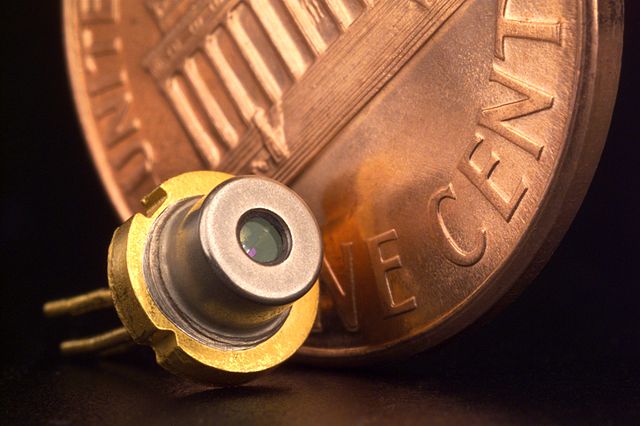Ti:sapphire lasers (also known as Ti:Al2O3 lasers, titanium-sapphire lasers, or Ti:sapphs) are tunable lasers which emit red and near-infrared light in the range from 650 to 1100 nanometers. These lasers are mainly used in scientific research because of their tunability and their ability to generate ultrashort pulses thanks to its broad light emission spectrum. Lasers based on Ti:sapphire were first constructed and invented in June 1982 by Peter Moulton at the MIT Lincoln Laboratory.
Part of a Ti:sapphire oscillator. The Ti:sapphire crystal is the bright red light source on the left. The green light is from the pump diode
The inner optical setup of a femtosecond Ti-sapphire pulsed laser
A Ti:Sapphire crystal in the centre of a multipass amplifier Quantronix Odin is pumped by 5W green beam (faintly visible coming from right), amplifies femtosecond pulses that pass it several times under different angles (invisible on the photo) and loses part of energy as red fluorescence light
Femtosecond pulses generate multiple angle-resolved colour patterns when focused; note their fan-out angle is even higher than that of the focused laser beam
A tunable laser is a laser whose wavelength of operation can be altered in a controlled manner. While all laser gain media allow small shifts in output wavelength, only a few types of lasers allow continuous tuning over a significant wavelength range.
CW dye laser based on Rhodamine 6G. The dye laser is considered to be the first broadly tunable laser.
A typical laser diode. When mounted with external optics these lasers can be tuned mainly in the red and near infrared.






